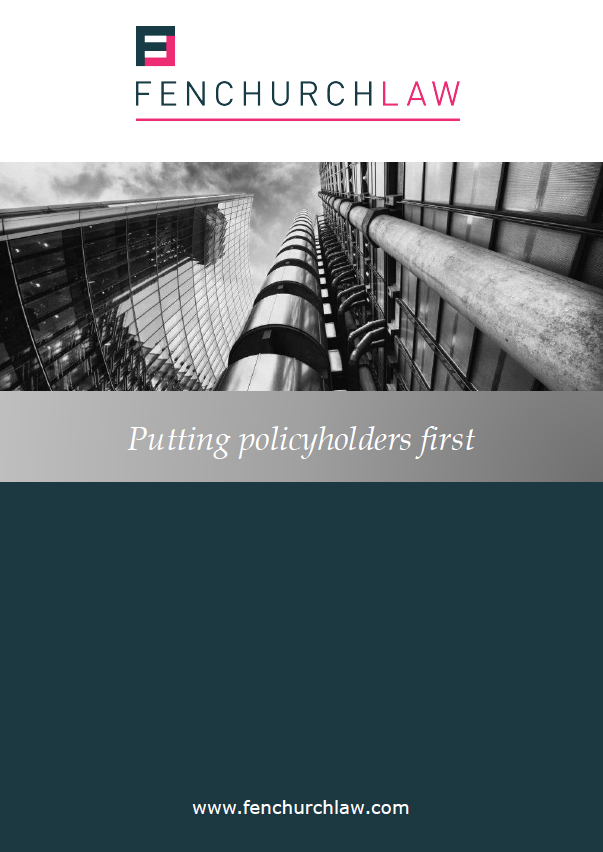
Insurance Cover for Combustible Cladding
Insurance Cover for Combustible Cladding
Dame Judith Hackitt’s Review of Building Regulations and Fire Safety recommends radical integrated change to the regulatory system covering high-rise and complex buildings, reflecting the realisation after Grenfell that previous oversight of the myriad activities and conflicting motivations involved in the construction of dwellings is not fit for purpose, to ensure safety of all occupants.
Focus on delivery and preservation of high quality buildings is of crucial importance for society and stakeholders across the industry. Challenges remain for many property owners and construction businesses affected by combustible cladding to existing structures, and insurers have a significant role to play in facilitating appropriate risk transfer and keeping buildings safe.
Recommendations
The report highlights misunderstanding of ambiguous or inconsistent guidance, lack of clarity on roles and responsibilities, competence issues, lack of transparency in product testing and approval, and inadequate enforcement tools as key problems underpinning the failure, creating a ‘race to the bottom’ culture that does not promote good practice. A clear model of risk ownership is proposed, held to account by a new Joint Competent Authority operating under a simpler and more effective regulatory framework, with audit trails of information throughout the life cycle of a building, from planning to occupation and maintenance. A ban on inflammable cladding is due to be implemented later this year through changes to building regulations, but this will not apply retrospectively where materials have already been fitted.
Remedial Costs
Removal and replacement of unsafe cladding by councils and housing associations will be government funded at a cost of approximately £400 million. Sajid Javid has said that freeholders of private developments have a ‘moral responsibility’ to pay for rectification without levying the costs through service charges, affecting thousands of leaseholders in 130 apartment complexes in England that failed cladding tests since the tragedy in June 2017. The allocation of responsibility in each case will depend on the leasehold arrangements and any latent defects insurance or housing warranty.
The London Residential Property Tribunal ruled in March against residents of the Citiscape complex in Croydon over the management company’s right to recover costs of replacement cladding and fire safety marshals, in circumstances where the leasehold repairing obligations and service charge covenants were co-extensive, before the developer and freeholder stepped in to cover remedial works of around £2 million. At the New Capital Quay development of 1,000 homes in Greenwich, completed in 2014, legal proceedings are reportedly underway between the management company and NHBC warranty provider, to determine liability for c.£40 million costs of Grenfell-style cladding, certified as compliant with building regulations at the time of installation.
LDI and New Home Warranties
Latent defects insurance (LDI) can be obtained affording first party cover to both homeowners and developer from practical completion, to rectify damage or imminent damage arising from pre-existing defects. Insurers typically look to recover the loss from any negligent professional involved in the construction process. LDI can avoid costs and delay associated with apportioning fault where previously accepted industry standards are exposed as inadequate (see also MT Hojgaard), and protect against contractor insolvency risk. Take up has increased in recent years, attracting investors and tenants.
The Council of Mortgage Lenders requires a 10 year warranty or insurance policy to lend for new build residential homes. Standard new home warranties provide cover for homeowners against actual or imminent damage caused by structural defects or breach of building regulations prior to completion, subject to initial 24 months’ period where the developer is liable to rectify. The ‘immediacy’ of damage arising from unsafe cladding will depend on evaluation of the surrounding circumstances including materials used, component parts of the structure, maintenance history and overall safety systems.
Insurance claims may be especially important for owners of property blighted by combustible cladding given the difficulty in law of recovering pure economic loss (i.e. in the absence of physical damage) without a direct contractual relationship or collateral warranty with any party considered responsible for design, installation or certification of unsafe systems.
Next Steps
The first substantive hearings of the Grenfell Inquiry led by Sir Martin Moore-Bick commence today with tributes from friends and family of the 72 victims, as part of a fact-finding process to investigate how such a disaster could have occurred, alongside a police probe into alleged criminal offences.
It is hoped that industry leadership will recognise and wholeheartedly support the cultural shift required, seizing the opportunity to restore public confidence and improve safety standards in the construction and maintenance of buildings for the benefit of all.
The scope of insurance cover for cladding claims is likely be contentious given the scale of market exposure and policyholders should consider specialist advice on applicable wordings, to notify claims broadly and maximise potential recoveries.
Amy Lacey is a partner at Fenchurch Law
Other news
Fenchurch Law expands into Scandinavia with Denmark office launch
31 October 2024
Fenchurch Law, the award winning international law firm working exclusively for insurance policyholders and brokers,…



